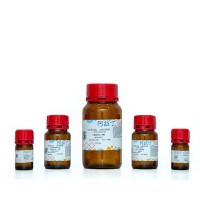The term fluorescence commonly refers to the phenomenon in which light from the ultraviolet (UV) spectrum is absorbed by a substance and emitted in the visible spectrum. Certain organic molecules absorb light energy, resulting in various interatomic bonds being raised to higher energy levels. This energy may be dissipated in several ways, one of which is the emission of light. Under normal circumstances, the emitted radiation is of a longer wavelength (lower energy) than that absorbed. The number of photons of light emitted is proportional to the number of molecules involved; that is, the concentration of fluorescent substance(s) present in the sample under consideration. The fluorescence intensity of a particular substance is determined by the difference in energy between the excited and ground states and the relative importance of other types of energy dissipation, such as collisional deactivation. It is important to note that the chemical and physical properties (e.g., pK a , dipole moment, interatomic distances) of the excited state may be much different from those of the ground state. These changes may result in special difficulties in the analysis of certain compounds (see section 1.2 ).






